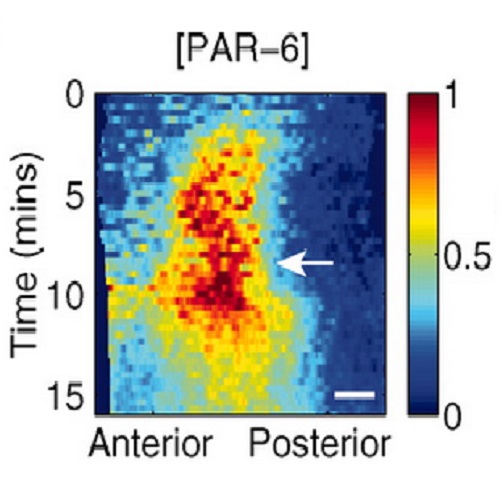Polarization of PAR proteins by advective triggering of a pattern-forming system.
In the Caenorhabditis elegans zygote, a conserved network of partitioning-defective (PAR) polarity proteins segregates into an anterior and a posterior domain, facilitated by flows of the cortical actomyosin meshwork. The physical mechanisms by which stable asymmetric PAR distributions arise from transient cortical flows remain unclear. We present evidence that PAR polarity arises from coupling of advective transport by the flowing cell cortex to a multistable PAR reaction-diffusion system. By inducing transient PAR segregation, advection serves as a mechanical trigger for the formation of a PAR pattern within an otherwise stably unpolarized system. We suggest that passive advective transport in an active and flowing material may be a general mechanism for mechanochemical pattern formation in developmental systems.

- Science 2011 Nov 25;334(6059):1137-41
- 2011
- Cell Biology
- 22021673
- PubMed
Enabled by:
